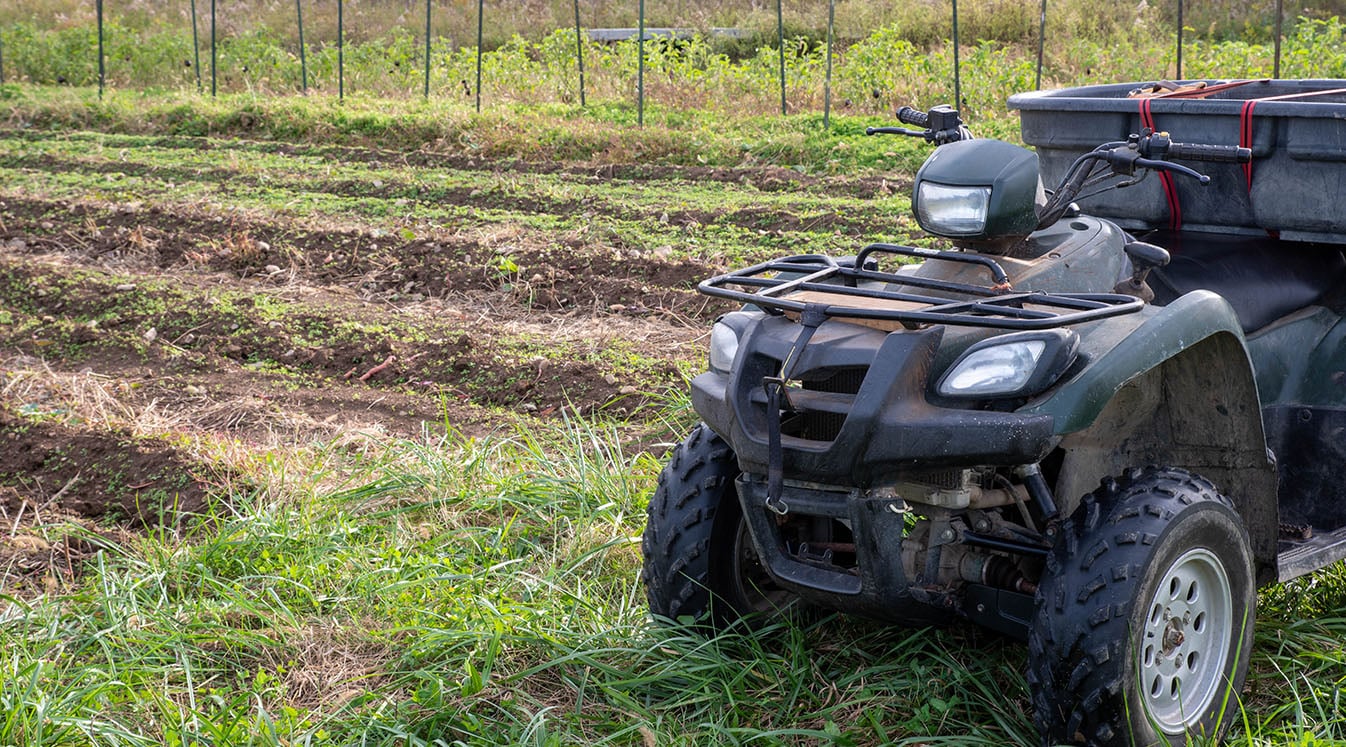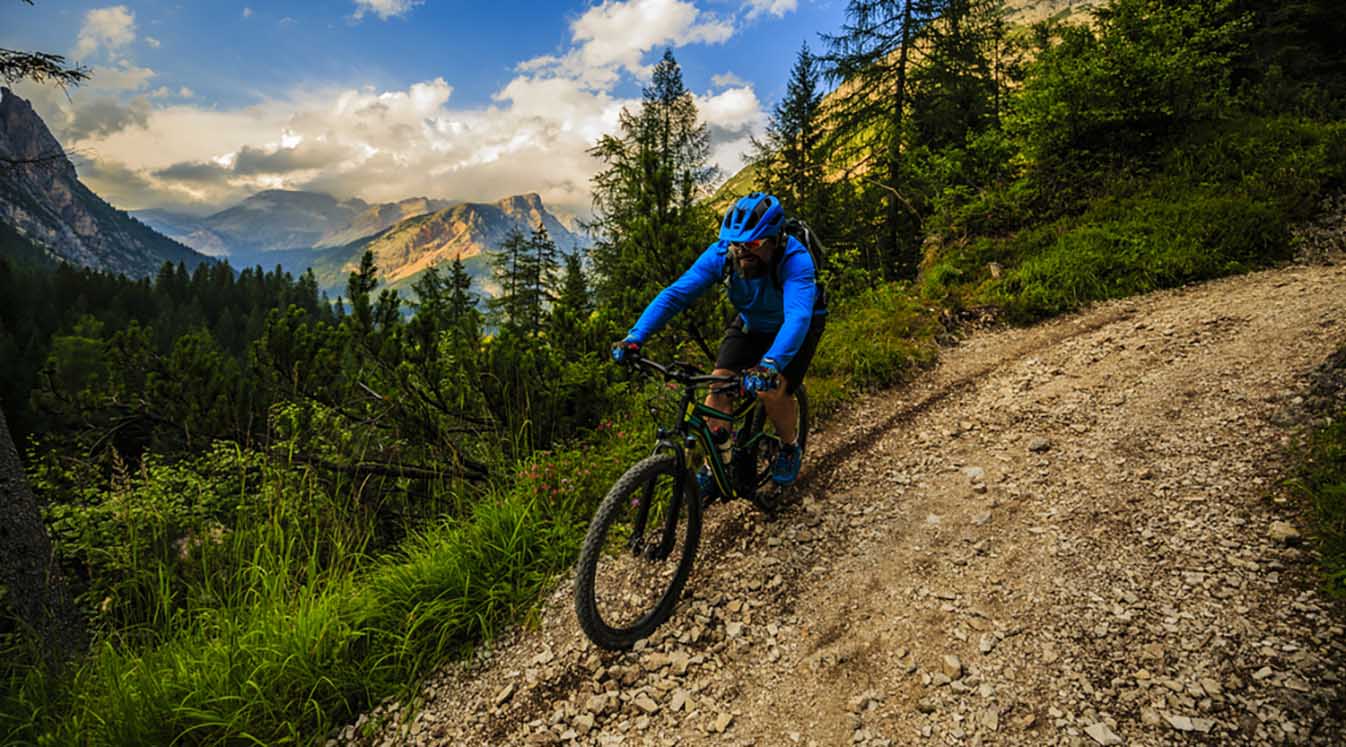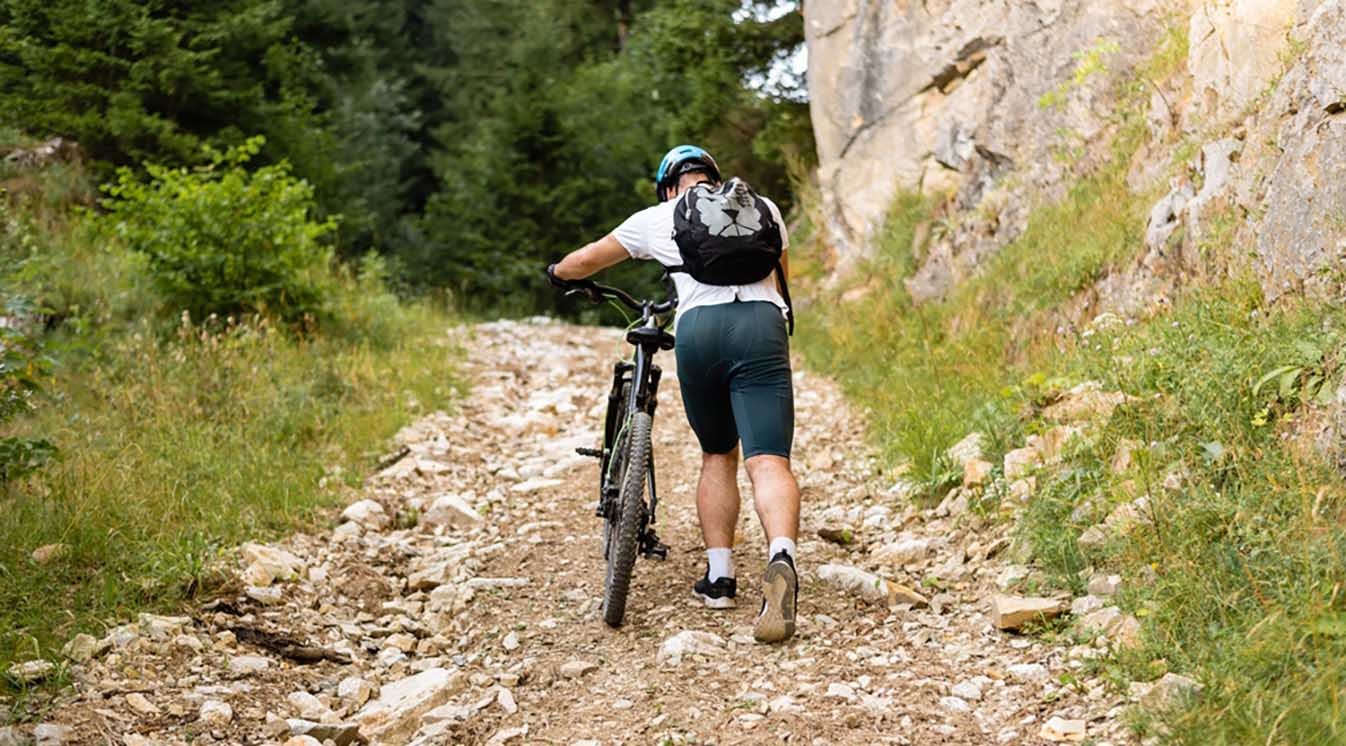If you own an ATV, did you know that you can turn it into a piece of farming equipment with a few modifications? This off-road vehicle is perfect for hobbyists and independent farmers looking to expand their operations. According to Pennsylvania State University, these machines can now be found on all types of farms and ranches. But ATVs weren’t traditionally designed for farming. They are mostly used for riding through the mud, dirt and snow in rural areas for fun or sport. So, how do you start farming with your ATV?
Use these tips to get the most out of your all-terrain vehicle:
What Is the Best ATV for Farming?
Not all ATVs are made equal. You want maximum control and durability when cruising around on a farm. Experts recommend using an ATV with a coil spring shock absorber system, automatic clutch, reverse gear, shaft drive and a differential with a locking mechanism. This will help you stop on a dime and provide extra comfort when you drive over bumps and hills on the property.
A 4×4 ATV will also make it easier to turn and drive over different kinds of terrain. Think about how well your equipment will perform in the mud, rain or snow. You shouldn’t be going more than 25 mph on the field, so speed isn’t really a concern.
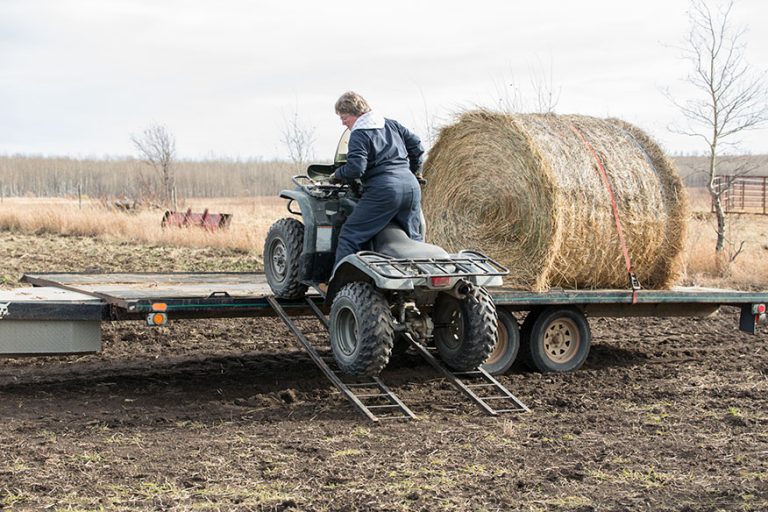
Source: Annzee/Shutterstock.com
How to Use an ATV for Farming
You can use your ATV to complete a variety of farming-related tasks, such as:
- Hauling supplies and raw materials
- Plowing fields
- Spreading seeds or fertilizers
- Raking leaves and weeds
- Harrowing fields for planting
- Mowing grass
- Shoveling snow
- Wrangling cattle and livestock
You will need a range of attachments and accessories to get the job done with an ATV, such as a trailer for hauling, a rake, a mowing deck or a harrow attachment for breaking up the dirt.
There’s no rush in farming. Take your time and tread carefully to avoid hurting your fields. Spend some time inspecting the property for structural integrity to avoid getting stuck in a pile of mud or dirt. If the water is high due to extreme flooding, move the air intake valve to the top of the vehicle to avoid clogging the pipes.
Even though you’re going slow and riding around on your own property, we recommend using the proper ATV riding gear, including a helmet, goggles, gloves, pants, long sleeves and durable boots for getting through muddy terrain. You may also need bug spray and sunscreen to protect yourself from the elements.
You won’t be able to communicate normally when operating the ATV, which can make it hard to coordinate with the rest of your group. Chances are you will need some farm hands to get through the harvest season, so find a way to quickly talk to your workers while riding. Use an off-road communication headset to talk to each other across long distances. It is perfect for two or more riders working together on the same task or for directing one of your farm hands while they are operating the equipment.
Use Off-Road Communication to Coordinate with Your Crew
The device attaches directly to the person’s helmet, so they can speak into the receiver hands-free without getting distracted from the task at hand.
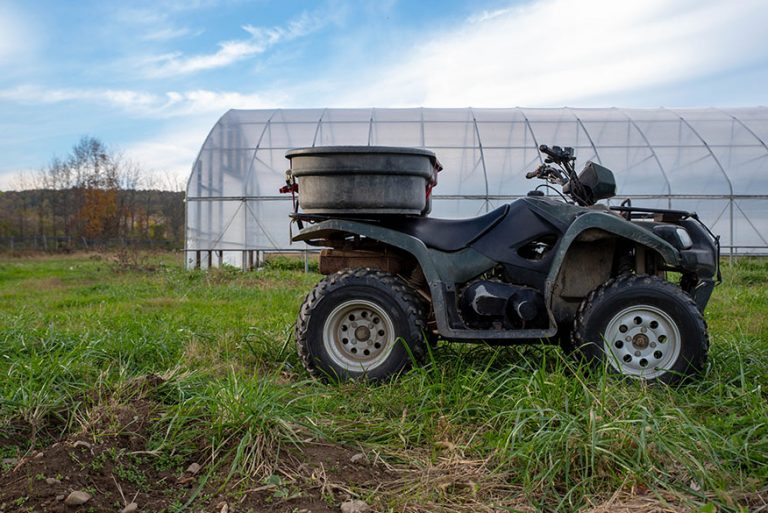
Source: GEA Stock/Shutterstock.com
Use caution when hauling items on your ATV. If you aren’t using a trailer, do not put more than a third of your vehicle’s overall weight on the rear carrying rack to make sure it doesn’t flip backwards. Follow the manufacturer’s guidelines when adding racks or a hitch to your vehicle and never exceed the weight capacity. Go slow and avoid turning too fast at high speeds.
Not all ATVs are street illegal, so avoid driving your vehicle on public roads unless you need to cross.
Every ATV is a secret workhorse in disguise. You don’t have to be a master at farming to start planting crops on your property. Consider modifying your ATV by adding the right equipment to whip your land into shape.



